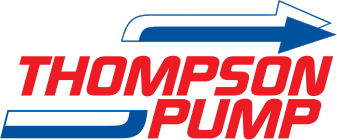Nomenclature
NOMENCLATURE
How do I know which kind of pump I need?
The type of pump required will depend on a number of factors – the characteristics of the fluid to be pumped, including air and solids, the distance to the fluid, the distance to pump, the location and remoteness of the pump, and so on. Contact a Thompson Pump certified Pumpologist to help determine the correct pump for your needs.
What are wet and dry prime?
Wet prime is the industry term for pumps that require fluid to be in the pump housing prior to start-up for prime to occur. Wet prime pumps are often called ‘self-primers’. Dry prime pumps are those that have an additional system added to create suction without requiring liquid to be in the pump housing prior to start-up. Dry prime pumps come in two versions – compressor assisted, and vacuum assisted. Only Thompson Pump offers a full line of wet and dry prime pumps, with both compressor assisted and vacuum assisted available.
What is re-priming?
Re-priming occurs when a pump is shut off and liquid remains in the pump housing. Since the liquid is already in the pump housing before the next start-up, the pump will automatically re-prime, without requiring any prime assistance. Thompson wet and dry prime trash pumps are able to automatically re-prime, while some other manufacturers pumps will not.
Does the engine RPM affect pump performance?
Changing the engine RPM changes the performance characteristics of the total pump package. Generally, increasing engine speed will increase the pump’s flow capacity. However, the higher the engine speed is increased, the smaller the gain in performance becomes. In addition, increasing the engine speed increases engine fuel consumption, reduces continuous operating time and reduces overall engine life, all of which increase operating cost. Many manufacturers quote high pump performance characteristics at high engine RPM to make their specifications appear better. Thompson Pump rates its pumps only at 1,800 and 2,000 RPM.
Is continuous run time important?
Continuous run time is important for a number of reasons. First, the longer the run time, the less shut-off and re-fueling that is needed. Long run time also requires less labor to attend to the pump. And, finally, long run time allows pumps to be used in locations that are difficult to access, especially for rental applications.
Model numbers? What is our nomenclature?
Please read this guide that explains our model number nomenclature and how to identify what that exact pump model has to offer.
